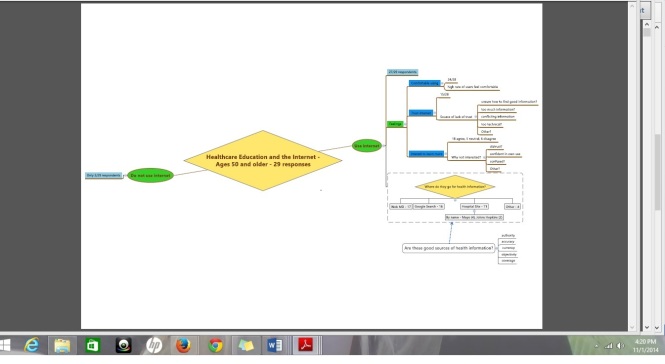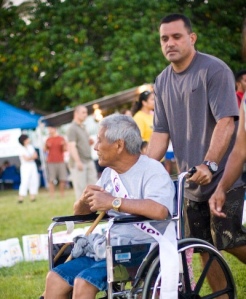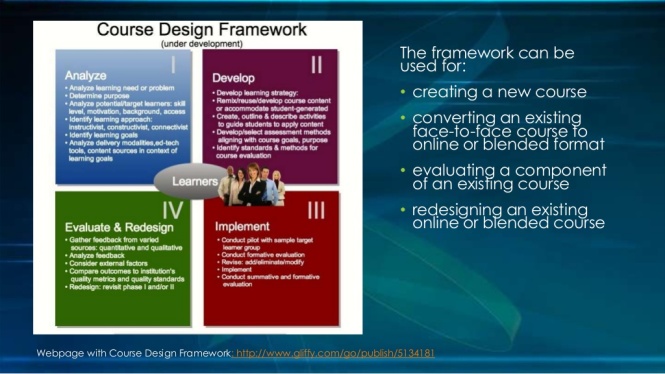Hello! So now I am in a course entitled “Integrating Learning and Technology” and will be blogging each week about what I am learning as I apply it to my learning situation (health education and working with Baby Boomers, caregivers and older adults). So I hope that, along the way, you will also learn a thing about how technology can be utilized to help learning.
The first blog is about technologies relating to connecting, interacting and sharing with our personal communities and networks. In other words, social networking such as Facebook, Twitter, Google Plus. However, there are many more and I was amazed at the development of ones developed just for education (Kapuler, 2011). Educators are interested in utilizing social networking to benefit learning and our challenge for this week was to picture ourselves using these tools in our specific learning situation (EDU 625 Unit 1 Intro, 2013). There is little doubt that the collaborative nature of the social networking and the opportunities to teach about diversity are remarkable utilizing social networking. In addition, various types of social networking allow us to move up through the levels of Blooms taxonomy. For example, mind-mapping as a type of analysis, a blog as a form of evaluation and a Youtube video (similar to what we did for an intro for this unit) as a form of creativity. However, there continue to be concerns about privacy and teaching students the risks of sharing online and in a “public conversation”.
these tools in our specific learning situation (EDU 625 Unit 1 Intro, 2013). There is little doubt that the collaborative nature of the social networking and the opportunities to teach about diversity are remarkable utilizing social networking. In addition, various types of social networking allow us to move up through the levels of Blooms taxonomy. For example, mind-mapping as a type of analysis, a blog as a form of evaluation and a Youtube video (similar to what we did for an intro for this unit) as a form of creativity. However, there continue to be concerns about privacy and teaching students the risks of sharing online and in a “public conversation”.
I enjoyed exploring the various technologies in this unit although I did have a lot of hesitation in downloading the programs due to fear of malware and viruses. I started by working with Screenr (no download) but realized I had a similar program already on my computer. I went ahead and downloaded Powtoon and it was fun and Prezi definitely has some advantages over PowerPoint for presentations. My son had experience with Audacity as his professor at college developed it but it seems to be most appropriate if audio manipulation is important. I did not end up downloading Muvizo but watched their introductory unit where they animated a cowboy. It was pretty amazing all the various aspects they allowed you to control even down to his eye movement. Most of these programs all had a basic free download but you could also see that there were upgrades available at a cost.
Although all the technologies presented were fun and interesting, I did not see a tremendous amount of direct application to my interest in teaching Baby Boomers, caregivers and older adults. This is primarily due to the lack of acceptance by older adults of current and new technologies. A qualitative study involving use of an existing social networking sites found that “understanding the internet as a dangerous place, and social networking sites as places of socially unacceptable behavior, hinders the use of social networking technologies” in the Baby Boomer and older generations (Lehtinen, Nasanen, & Sarvas, 2009). That is not to say that all technologies have been rejected by Baby Boomers. A recent study linked internet/e-mail activity to less cognitive decline (Xavier et al., 2014) and Baby Boomers’ acceptance of certain technologies is increasing (LeRouge, Van Slyke, Seale, & Wright, 2014).  There is little doubt that learning benefits older learners and that adult learners benefit from an intrinsic motivation to learn interesting things and contribute to society (Phipps, Prieto, & Ndinguri, 2013). The authors of this same article go on to say that keeping adults motivated is central to their learning and that encouraging and maintaining confidence in their ability to learn is important as self-efficacy must be maintained in order that they “achieve the learning outcomes to which they aspire” (Phipps et al., 2013, p. 21). Therefore, these are the qualities I look for in technology. My EDU 624 presentation included a Facebook page as an ideal way for collaboration and establishment of a community of caregivers with similar interests in home modification. However, the question of how well it would be accepted by these generations was still a question unanswered.
There is little doubt that learning benefits older learners and that adult learners benefit from an intrinsic motivation to learn interesting things and contribute to society (Phipps, Prieto, & Ndinguri, 2013). The authors of this same article go on to say that keeping adults motivated is central to their learning and that encouraging and maintaining confidence in their ability to learn is important as self-efficacy must be maintained in order that they “achieve the learning outcomes to which they aspire” (Phipps et al., 2013, p. 21). Therefore, these are the qualities I look for in technology. My EDU 624 presentation included a Facebook page as an ideal way for collaboration and establishment of a community of caregivers with similar interests in home modification. However, the question of how well it would be accepted by these generations was still a question unanswered.
In conclusion, I realize that I need to keep an open mind when evaluating these technologies. The easy way would be to just dismiss them and say they would not be accepted by these older generations. There is no doubt that there is more resistance to technology and change in the older generations. I think they often feel “left behind” by advances in technology or just do not feel they are worth learning in the first place (Lehtinen et al., 2009). As I mentioned, Baby Boomers will be more accepting of technology than elderly learners but will still be challenging as, according to research, technology aimed at Baby Boomers needs to be familiar, useful and easy to use (LeRouge et al., 2014). I am looking forward to learning about more technologies and am hopeful that I will discover ones that will contribute towards older adult learning.
References
“EDU 625 Unit 1 Intro”. (2013). Retrieved from http://www.youtube.com/watch?v=qm0kPuoWhJw
Kapuler, D. (2011). Top 20 Social Networks for Education. Technology Tidbits: Thoughts of a Cyber Hero. Retrieved from http://cyber-kap.blogspot.com/2011/08/top-20-social-networks-for-education.html
Lehtinen, V., Nasanen, J., & Sarvas, R. (2009). “A Little Silly and Empty-Headed” – Older Adults’ Understandings of Social Networking Sites. Paper presented at the BCS-HCI ’09 Proceedings of the 23rd British HCI Group Annual Conference on People and Computers: Celebrating People and Technology UK.
LeRouge, C., Van Slyke, C., Seale, D., & Wright, K. (2014). Baby boomers’ adoption of consumer health technologies: survey on readiness and barriers. Journal of Medical Internet Research, 16(9), e200.
Phipps, S., Prieto, L., & Ndinguri, E. (2013). Teaching an old dog new tricks: Investigating how age, ability, and self efficacy influence intentions to learn and learning among participants in adult education. Academy of Educational Leadership Journal, 17(1), 13-25.
Xavier, A., D’Orsi, E., Oliveira, C., Orrell, M., Demakakos, P., Biddulph, J., & Marmot, M. (2014). English longitudinal study of aging: Can internet/e-mail use reduce congitive decline? J Gerontol A Biol Sci Med Sci, 69(9 ), 1117-1121.





























